29 F. high in the Twin Cities Tuesday.
35 F. average high on March 3.
10 F. high on March 3, 2014, after waking up to -10.
1.9" snow fell at MSP International Airport yesterday.
March 3, 1935:
Extremely damaging ice storm in progress at Duluth. At the time it was
called "The worst ice storm in Duluth's history." The storm began with
rain and moist snow falling at the Duluth Weather Bureau in at 7th Ave
West and 8th Street in Duluth at 10pm on March 3rd. The temperature was
26 degrees. By the morning of the 4th, the snow stopped but the rain
continued. The lights started going out in Duluth by 6pm on the 4th due
to power lines breaking. By the morning of the 5th, Duluth was virtually
isolated from the outside world except for short wave radio. A local
ham radio operator sent the Duluth National Weather Service reports:
Four streetcars had to be abandoned in the storm, three of them in the
western part of the city. A heavy salt mixture and pick axes were used
to try to free the stuck streetcars. A one-mile stretch of telephone
poles along Thompson's Hill was broken off as if they were toothpicks
due to the ice.
Weather Therapy
Some
days I feel like a financial planner after the Crash of 1929. "The
market has cratered, you've lost everything but hey, you still have your
health!"
Right.
People take their weather very personally
when it impacts their jobs (farmers, construction) or personal lives
(weddings, grad parties, fishing & cabin trips - it's a long list).
As
meteorologists we have an obligation to connect the dots, highlight the
trends and peer into an uncertain future. But the public wants
optimism; a bright shining light at the end of the tunnel.
"I hope
we don't have a spring like the last 2 years with snow into May" a
colleague grumbled yesterday. Gazing at the maps I suspect we'll see a
faster, milder jump-start to spring than in recent years. Just a gut
call, based on how jet stream winds are setting up.
Today stings
your cheeks and takes your breath away (and not in a good way). We go
from -8F Thursday morning to 40s this weekend; a few days of 50s next
week. More like early April. No dimmer switch this spring; more like a
light switch. I suspect 2015 will be warmer and drier than recent years.
We'll see.
Just remember it could always be worse. You could be stuck in Boston. 104" and counting.
Meteorological Winter: Half A Degree Colder Than Average.
That's a veritable bargain compared to last winter, which ran 9F colder
than average between December 1 and February 28. A cold February more
than made up for a milder than average December and January. Source:
MPX National Weather Service.
Tuesday Snowfall Amounts. Most of the metro picked up
up 1-3" of snow; as much as 4" from near Osseo to Coon Rapids. The
heaviest amounts were near Alexandria and Morris, where 6" of snow fell,
whipped along by strong winds to create white-out conditions. More
details from the
National Weather Service in the Twin Cities.
The Last Subzero Smack?
No guarantees, but with a fast-forward push into spring next week the
odds of serious subzero weather will rapidly diminish over the next 1-2
weeks, with the possible exception of northern New England. By Friday
the 32-degree isotherm approaches the Twin Cities. Get ready to ring the
church bells. 2-meter temperature forecast: NOAA and Ham Weather.
An Early April Fool's Joke?
No, I don't think the high at MSP will be 64 one week from tomorrow.
But upper 40s and low 50s seem reasonable, typical for the first week of
April. Temperatures bottom out tonight before recovering rapidly, a
thaw by Friday - premature cases of spring fever likely within a week or
so. That was fast. Graphic: Weatherspark.
Another Snowy Streak.
More heavy snow spreads a stripe of late winter misery from Evansville,
Louisville, Cincinnati and Altoona to Washington D.C., Philadelphia and
New York City, where 5-8" snow may fall Thursday. Boston will be
spared, no more than an inch or two expected. Map: NOAA and Ham Weather.
Can You Really Get A Cold From Going Outside With Wet Hair? The short answer is no. Here's an excerpt of a good explanation at
Huffington Post: "...
In
order to get an infection you need to be exposed to an infectious
agent," said Dr. Pritish Tosh, an infectious diseases physician and
researcher at the Mayo Clinic. "There are several things that circulate
during periods of cold weather -- influenza, different cold viruses.
That's what you need to get infected. Going out with wet hair is not
going to cause an infection..."
Snow-Beleagured Boston Poised To Set All-Time Record.
104" and counting - Boston only needs another 3.5" to break the
all-time seasonal snowfall record set in 1995-96. Here's an except from
The Los Angeles Times: "...
Boston is likely to make
the history charts this week by surpassing its record for snowfall in a
season, meteorologists predicted. Meanwhile, the National Oceanic and
Atmospheric Administration got a jump on spring, officially just weeks
away, by launching a preparedness campaign for the weather-related ills
that come when the weather warms..."
Photo credit above: "
Runner
Becca Pizzi, 34, uses a snowbank to stretch as she trains along
Heartbreak Hill in Newton, Mass., Friday, Feb. 27, 2015. Running 26.2
miles requires endurance, but 8 feet of snow and lots of treacherous
black ice are testing this year's participants in frustrating new ways.
Though the worst of the winter now seems past, there are only 50 days
left until April 20, the 119th running of the venerable race." (AP Photo/Elise Amendola).
Truth Test: Is The Safest Place During a Tornado the Southwest Corner of your Basement?
The short answer is no. Under the stairs, near the middle of the
basement if possible, is the best place to ride out an extreme wind
storm, lowering, but not entirely eliminating the risk of being hit by
falling debris.
KSN.com has a good explanation; here's an excerpt: "...
But
in reality, no corner is safer than the other. Walls, floors, and
furniture can collapse or be blown into any area of a home. The idea
that the southwest corner is safest is an old myth based on the belief
that tornadoes typically come from the southwest meaning debris will
fall into the northeast side of the basement. There are several problems
with this myth..."
Photo credit above: "
This photo shows a home from the Greensburg, Kansas tornado where debris fell into the southwest portion of basement." (KSN Photo Dave Freeman).
New Film on China's Pollution Sparks Debate, Seen as Milestone.
Reuters takes a look at a movie going viral, and for good reason: "...
Could
"Under the Dome", Chinese journalist Chai Jing's new documentary about
pollution, become China's "Silent Spring", the 1962 book that spurred
the development of the U.S. environmental movement?
Since it was released online on Saturday, the film has been viewed more
than 150 million times and has sparked a national debate on
environmental problems. "Under
the Dome", which explains air pollution in personal, straight-forward
terms, was well-timed: this week China's National People's Congress, the
country's parliament, holds its annual meeting..."
Under The Dome.
My Mandarin isn't very good, but the visuals are excellent - I hope
someone translates this to English. It's more than raw science, numbers
and statistics, the filmmaker personalizes air pollution in a way few
other films in China have done. The film is available on
YouTube.
The High Price of China's Smoggy Skies. Bloomberg Business
takes a closer look at the trends, and why many foreign nationals now
demand hazard pay for working in Beijing or Shanghai; here's an excerpt:
"..
.In just a few days, more than 100 million have watched online
the documentary on China's filthy skies and the toll taken on its
people. The chart below illustrates why: a reading of 0-50 is seen as
"good" air quality, 51-100 is regarded as "moderate", 101-150
"unhealthy" for sensitive groups, 151-200 deemed "unhealthy" and 201-300
"very unhealthy". Above that is simply "hazardous..."
Satellite Data Suggests Forest Loss is Accelerating.
Deforestation is another major contributor to climate change and
climate volatility. Fewer trees mean less CO2 is absorbed, naturally,
which increases concentrations of this heat-trapping gas. Here's an
excerpt from
Reuters: "
Satellite
images suggest tropical forests from the Amazon to the Philippines are
disappearing at a far more rapid pace than previously thought, a
University of Maryland team of forest researchers say.
The annual rate of deforestation from 1990 to 2010 was 62 percent
higher than in the previous decade, and higher than previous estimates,
according to a study carried out of satellite maps covering 80 percent
of the world’s tropical forests..."
Image credit above: "
Forest cover loss from 2000 to 2005." Image Credit: NASA/USGS/UMD/SDSU.
Cleaning Up Wastewater From Oil and Gas Operations Using a Microbe-Powered Battery. Given a chance the markets will come up with the solutions we're going to need; here's a clip from an interesting story at
Gizmag: "
A
treatment process developed by engineers at the University of Colorado
Boulder promises a simpler and more economical way to clean up the
wastewater produced by oil and gas operations that is heavily salinated
and full of organic contaminants. The technique, which involves the use
of a microbe-powered battery, also produces rather than consumes energy..."
American Democracy is Doomed. No, I don't agree - and I believe the author is wrong (we somehow survived Watergate and hanging chads), but
Vox has a curious article that attempts to connect the dots with the current political malaise in Washington D.C. : "...
Still,
Linz offered several reasons why presidential systems are so prone to
crisis. One particularly important one is the nature of the checks and
balances system. Since both the president and the Congress are directly
elected by the people, they can both claim to speak for the people. When
they have a serious disagreement, according to Linz, "there is no
democratic principle on the basis of which it can be resolved." The
constitution offers no help in these cases, he wrote: "the mechanisms
the constitution might provide are likely to prove too complicated and
aridly legalistic to be of much force in the eyes of the electorate...."
Earth's "Other Moon"? Who knew? Check out an article at Australia's
The Conversation; here's a clip: "...
What you might not know is that the moon is not the Earth’s only natural satellite. As recently as 1997, we discovered that
another body, 3753 Cruithne, is what’s called a quasi-orbital satellite
of Earth. This simply means that Cruithne doesn’t loop around the Earth
in a nice ellipse in the same way as the moon, or indeed the artificial
satellites we loft into orbit. Instead, Cruithne scuttles around the
inner solar system in what’s called a “horseshoe” orbit..."
Image credit: "
Cruithne’s wacky orbit around the sun."
YouTube, CC BY-SA
How Do You Make a Video Go Viral? An article at Quora has some interesting suggestions and tips; worth a look if you have a hankering for this sort of thing.
TODAY: The cold is getting old. Bright sun. Feels like - 20F. Winds: NW 15-25. High: 8
WEDNESDAY NIGHT: Clear and numbing. Low: -8
THURSDAY: Nippy start. Blue sky, still chilly. High: 16
FRIDAY: Partly sunny, a welcome thaw. Wake-up: 12. High: 37
SATURDAY: Intervals of sun, pleasant. Wake-up: 23. High: 35
SUNDAY: Clouds, few flurries possible. Wake-up: 24. High: 34
MONDAY: Some sun, vague hints of April. Wake-up: 26. High: 47
TUESDAY: Plenty of sun, pleasantly mild. Too early for spring fever? Wake-up: 30. High: 51
Climate Stories...
Study: Human-Caused Global Warming Behind California Drought. Here's an excerpt of a story at
USA TODAY that caught my eye: "...
The
study, led by Stanford scientist Noah Diffenbaugh, found that the worst
droughts in California's history occurred when conditions were both dry
and warm, and that global warming is increasing the probability those
two weather patterns will coincide. Diffenbaugh said having very dry
years that are also very warm would not have happened without human
influence. Burning of fossil fuels such as oil, gas and coal increases
the amount of carbon dioxide and other "greenhouse" gases in the
atmosphere and cause the planet to warm to levels that cannot be
explained by natural causes..."
* The latest U.S. Drought Monitor map for California is
here.
Paper Abstract. Here's a link to the paper and abstract referenced above, courtesy of pnas.org,
The Proceedings of the National Academy of Sciences: "...
Our
analyses show that California has historically been more likely to
experience drought if precipitation deficits co-occur with warm
conditions and that such confluences have increased in recent decades,
leading to increases in the fraction of low-precipitation years that
yield drought. In addition, we find that human emissions have increased
the probability that low-precipitation years are also warm, suggesting
that anthropogenic warming is increasing the probability of the
co-occurring warm–dry conditions that have created the current
California drought..."
Global Warming-Upped Heat Driving California Drought. Climate Central
has more perspective on how insufficient precipitation isn't sufficient
for a long-lasting mega-drought; it also has to be warmer than average.
Here is where the human signal appears to be most visible, and
scientifically defensible. Here's an excerpt: "...
There’s no question that low precipitation is a prerequisite for severe drought in California but it’s not sufficient,” Noah Diffenbaugh,
a senior fellow at the Woods Institute for the Environment at Stanford
University, said. “The efficiency of low precipitation turning into
severe drought is much higher if there are warm conditions.” Diffenbaugh
led the new research, which analyzed 20 moderate to severe droughts
that are on record for California going back to 1896. Those droughts
have occurred twice as often since 1995. Wet season precipitation hasn’t
changed noticeably over that time period. The big shift has been
temperature. Prior to 1995, about half of all moderately dry years
overlapped with warmer than average temperatures. But since then, every
dry year has also occurred in a warm year..."
File photo above: "
In
this Thursday, Oct. 30, 2014 file photo, houseboats sit in the drought
lowered waters of Oroville Lake, near Oroville, Calif. California voters
overwhelmingly see the state's ongoing water shortage as a serious
problem. A Field Poll released Thursday, Feb. 26, 2015 says 94 percent
consider the shortage serious, and of those 68 percent find it extremely
serious. California is entering its fourth year of drought with lower
than normal rain and snow falling on the state that leads the nation in
agriculture production." (AP Photo/Rich Pedroncelli, File)
At Hearing Climate Change Called "Threat Multiplier".
The Texas Tribune has the story; here's a clip: "...
Climate
change is often seen through a political lens,” said retired Air Force
Lt. Gen. Ken Eickmann, a senior research fellow at the University of
Texas at Austin's Energy Institute. “I’d like to discuss it from a
military perspective. … Climate change poses a serious threat to
America’s national security.” Eickmann told the House International Trade and Intergovernmental Affairs Committee that
rising temperatures and sea levels related to global warming are
security threats worldwide. In some cases the threat is direct, such as
extreme weather disrupting economies and trade..."
New Study Says Climate Change Helped Spark Syrian Civil War.
Changes in climate that create more acute water shortages and mass
migrations capable of leading to revolution? Get used to it. Here's an
excerpt from
Slate: "
By now, it’s pretty clear that we’re starting to see visible manifestations of climate change beyond far-off melting ice sheets. One of the most terrifying implications is the increasingly real threat of wars sparked in part by global warming. New evidence says that Syria may be one of the first such conflicts. We know the basic story in Syria by now: From 2006-2010, an unprecedented drought forced the country from a groundwater-intensive breadbasket of the region to a net food importer. Farmers abandoned their homes..." (File photo: AP Photo/Aleppo Media Center, AMC).
Polar Ice Painful To See for Photographer Camille Seaman. Canada's
CBC News has the story and photo essay which is quite remarkable; here's an excerpt: "...
It was by chance that Camille Seaman first travelled north — a bumped flight on Alaska Airlines led to a free trip to Kotzebue on the Bering Strait.
Little did the San Francisco-based photographer know it was the
beginning of a decade-long quest, an unshakable compulsion to take
pictures of icebergs in some of the most extreme environments on Earth.
At the time, she simply wanted to document beauty in visually stunning
vistas of the Arctic and Antarctica. She wasn’t thinking about climate
change then, but as the newest artist-in-residence at Denali National
Park in central Alaska, it’s top of mind now. On her last Arctic sailing
in 2011, she says there was almost no ice..."
Photo credit above: "
Photographer
Camille Seaman photographs icebergs as if they were portraits of an
ancestor. This she attributes to her grandfather, who instilled in her a
love of the natural world. 'I've never met two which were alike,'
Seaman says of her favourite subject matter." (Camille Seaman).
Signs of Spring "Shifting" in Trees. Here's the intro to a
BBC story:
"Scientists say signs of spring are appearing earlier in woodlands
because of temperature rises in past decades. They predict that climate
change will alter the order in which different trees start to grow
leaves, with long-term implications for the survival of some woodland
plants. A 200-year-old record from a Norfolk estate shows warmer springs
are causing most woodland plants to leaf earlier..."
The High Cost of Climate Uncertainty.
The Columbia Business School had an interesting story about risk, the stock market and pricing carbon; here's an excerpt: "...
A
uniform carbon tax, Daniel argues, could similarly function as a type
of insurance against the possibility of devastating effects from climate
change. “Even if scientists can’t precisely estimate the consequences
of higher CO2 concentrations, if there is even a possibility of a
catastrophic outcome as a result of our use of fossil fuels, we should
pay the cost today to bring down this risk...”

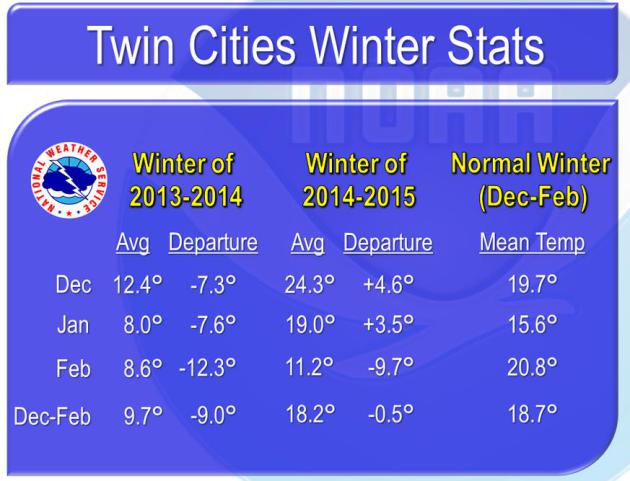

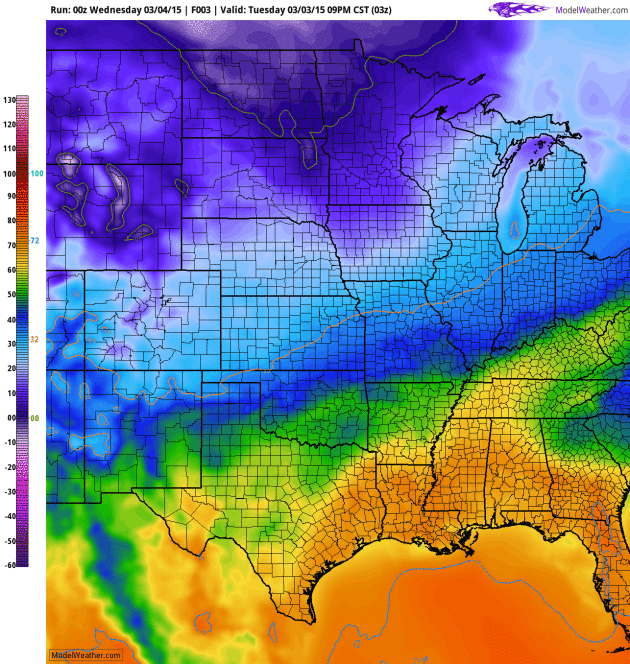
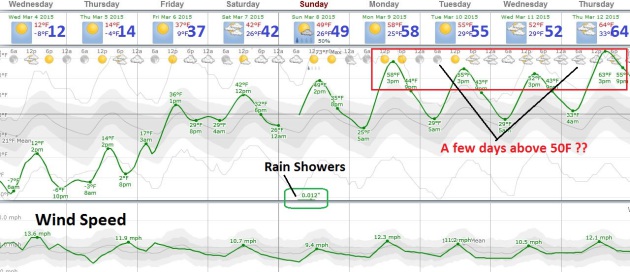
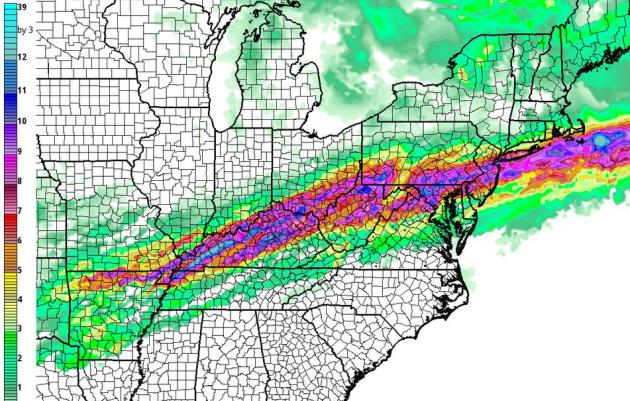


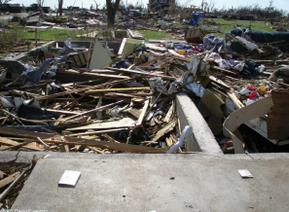



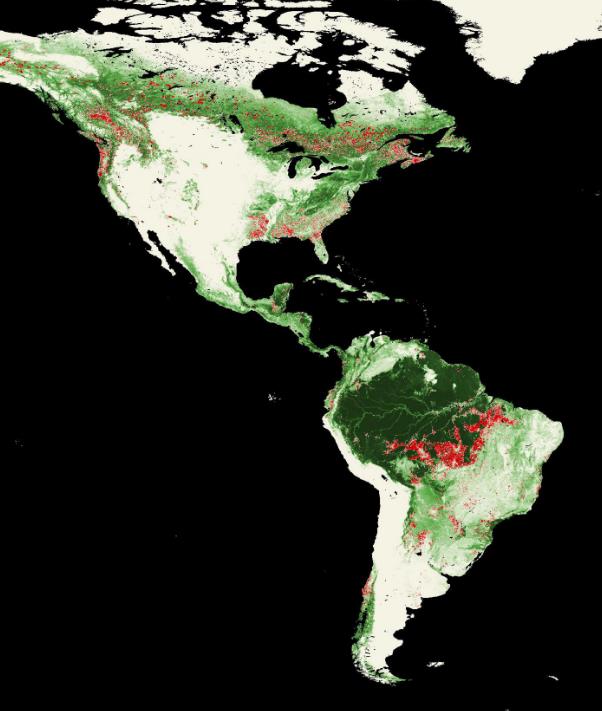




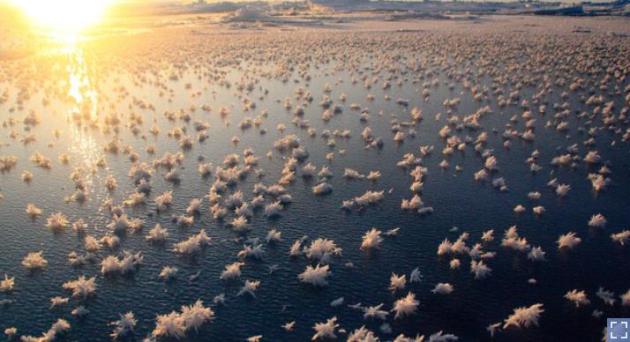
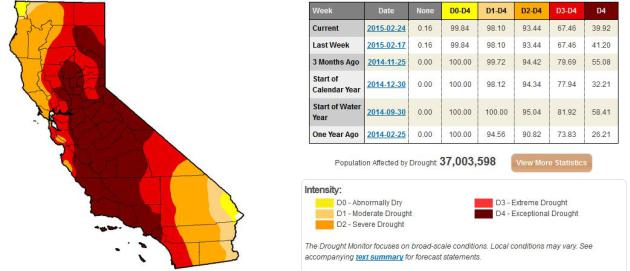

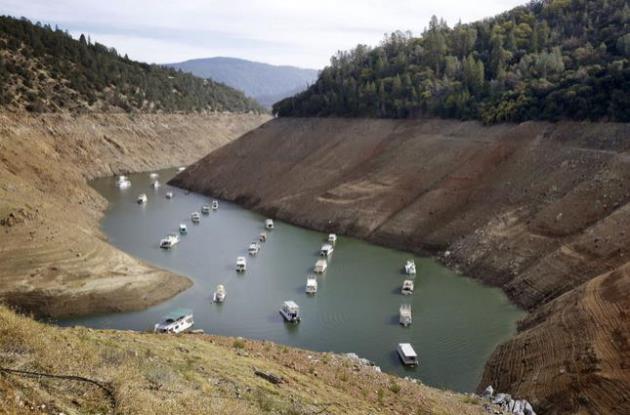


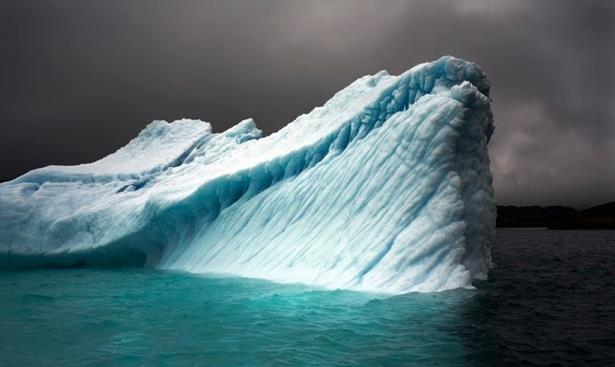
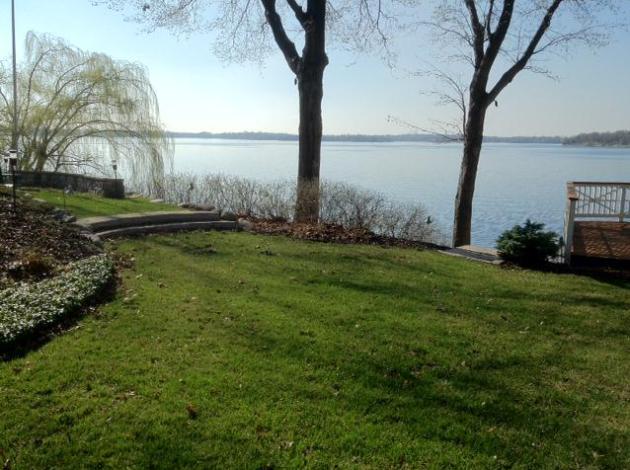

No comments:
Post a Comment